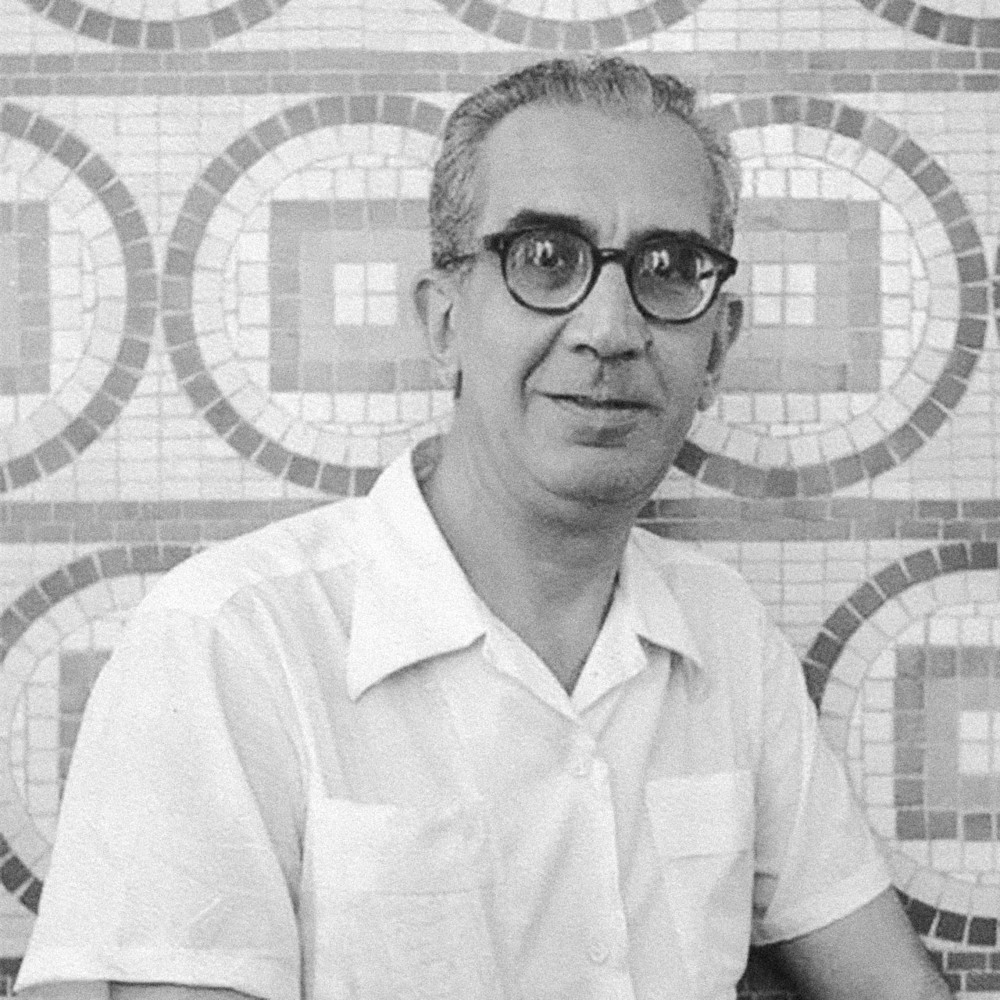
Paulo Werneck
Self-taught, highly skilled and attracted to challenges and experimentation, Paulo Werneck became a leading Brazilian muralist after joining Oscar Niemeyer and a group of foremost artists in the design of the Pampulha Neighborhood Project in 1942. Niemeyer designed the buildings and Werneck designed mosaic murals for both interiors and exteriors. These Pampulha mosaic murals were the first works of abstract art in Brazil for public consumption. In his early work as a mosaic muralist he decided to try mosaics in pursuit of reviving an ancient technique which had been abandoned for centuries. Unlike most muralists, who have specialized studios, his work was produced by a small team in his own atelier, where he embraced the dual roles of artist and artisan. He was convinced that art was a public asset and devoted himself to bringing art and life in closer contact. Having begun his career as an illustrator, in 1928, at the age of 21, he began work as a craftsman in the ground-breaking firm MMM Roberto Architects. There, along with a group of young architects, he followed Le Corbusier's suggestion of "adorning the concrete walls" of the modern structures they were conceiving. This concept became a guiding principal in his work in the following decades, going on to collaborate with other modernist architects. In the last decade of his career he designed and produced in his atelier more than 150 mosaics for Banco do Brazil. Originally designed for the family’s Paqueta Island home, Paulo Werneck’s abstract mosaic patterns were applied to a series of tables. These pieces along with a new console re-imagined by his grandson Gaspar Saldanha and Etel are being introduced to Canada for the first time at AVENUE ROAD.